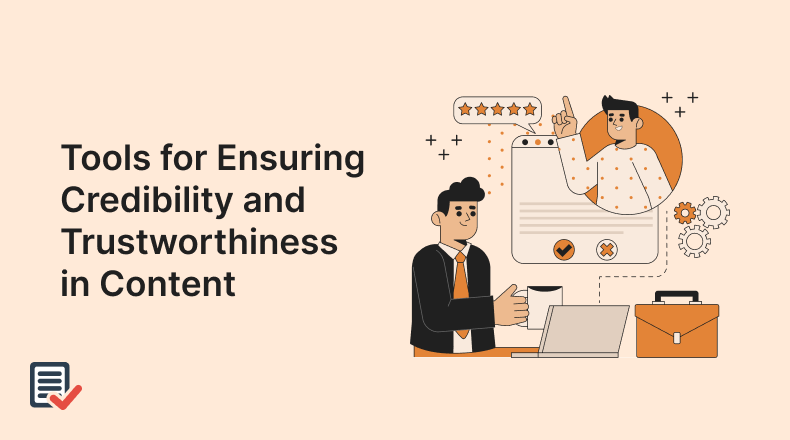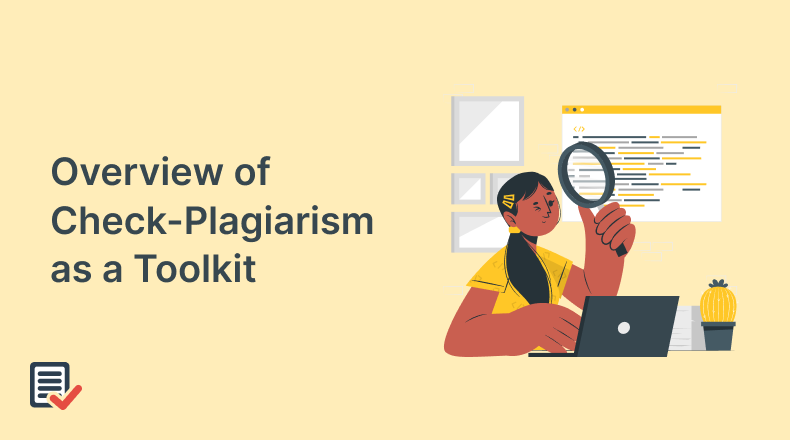
Trust is hard to build and even harder to maintain. Trustworthiness is the most important aspect of your brand. To establish a relationship with a potential customer, you must build trust online by offering content that is credible and interesting.
Convey your messages clearly and consistently to people from start to finish, no matter how challenging it will be. The more trustworthy your content, the more people will appreciate it. But how can you measure content credibility and ensure that you are providing valuable and reliable information to your readers? In this blog, we will be discussing online utilities that can help you ensure credibility and trustworthiness in content. But before that, let us take you through the importance of these factors in the content world.
Why Does Credible and Trustworthy Content Matter?
A good content strategy focuses on engaging the target audience. It is about creating a strong narrative that makes you stand out from competitors and make your content more credible. If your content is credible, it brings many benefits that improve user engagement. Credibility enhances content reputation and showcases your expertise. This factor in content builds trust with the audience, as it revolves around providing relevant, accurate, and helpful information that meets their needs.
But if the visitors are unable to witness credibility in your content, they won’t give you credit for relevance or value. Content credibility refers to how well your content reflects the facts, data, and evidence that you present. You should always check your content for errors, inconsistencies, or misinformation and update your content regularly.
What Makes Content Trustworthy and Credible?
Your content has poor credibility when it contains information that is against the experts of the industry or not backed by trustworthy sources. To make your content credible, you must incorporate facts, reliable sources, and accurate information that leads to the correct conclusions.
Trust is an essential requirement for your content, especially if you create content to be shared among the audience. This factor is something that people will associate with a product or service. Credible content creates positive associations between you and your audience, which leads to more engagement. Many people and businesses think that fake content can influence people. But they are wrong. If you want more people to trust your information and services, make sure your content is credible.
Tools to Ensure Content Credibility
Trust and credibility emerge as foundational pillars that influence user interactions and perceptions. Fortunately, various tools enhance the content’s credibility and trustworthiness. Here’s a closer look at some of these essential tools:
1: AI Content Detector
AI content detector helps you detect whether the text is human-written or AI-generated within seconds. The use of AI has become quite popular among writers, but they should know that generative AI can provide them with content that’s not credible. For this reason, this AI checker highlights the instances of duplication and ensures 100% accurate results for all users. It saves you from making any manual efforts or waiting for a longer period of time to get AI detection results. You will get accurate and reliable AI detection results by using this web-based utility. It makes an in-depth analysis and critically examines every feature of content to check if it’s generated by AI or not.
Features:
- It makes it easy to distinguish between AI-generated and human-written content by highlighting sentences.
- It examines the whole uploaded content and the overall layout of the written text.
- The AI detector is capable of detecting information that is fetched from ChatGPT, OpenAI GPT-3, GPT-4, and other AI writing tools.
2: Reverse Image Search
The reverse image search helps you to ensure that the visuals you are looking forward to using are royalty-free or violate copyright laws. It allows you to determine whether or not your images have been copied illegally by other websites. It works by scanning images available on different search engines and making their results available distinctively.
It also tracks similar images in case you don’t find exact matching results for your needs. This tool doesn’t ask you to get registered. You can easily use it unlimited times without any restrictions. With this tool’s assistance, it becomes easy to find where a picture originated, along with many other details.
Features:
- It supports all sorts of image formats.
- Reverse image search is compatible with both desktop and smartphone devices.
3: Plagiarism Checker
Plagiarism checker that can help you check whether a piece of text is original or duplicated. In order to track the credibility and trustworthiness of students and writers, this tool can prove to be helpful for teachers and webmasters.
With this plagiarism detector, writers can make sure that their publishing content won’t affect their credibility due to any instance of replication. This tool scans your content and provides a complete report to highlight the exact portions of text that are copied.
Features:
- It generates a percentage-based report with real source indication.
- It’s a fast and accurate plagiarism detection tool.
3: Fact Check Explorer
With false information and misinformative content, it’s becoming more and more difficult to know what is real on the internet and social media. The Fact Check Explorer by Google can help you overcome this hassle like a pro. This tool has a search function that allows users to search by keywords and phrases. It helps users find matching claims and perform corresponding fact checks. The functionality of Fact Check Explorer is the same as you can use regular Google search. It is possible to restrict results by language and publisher, or you can view recent fact checks.
This tool assists you in search and browser fact checks easily. Google’s Fact Check Explorer is designed to facilitate the work of fact checkers, journalists, and researchers in discovering what has and hasn’t been debunked all over the globe.
Features:
- It helps users understand when a piece of information was initially indexed by Google and how it has been used subsequently.
Conclusion:
First impressions matter, especially when it’s online. When people trust your company or brand, they open up to your messages, and you have more credibility in their vision. Trustworthy content depends on clarity, original thinking, and unique writing. These attributes help individuals achieve goals in their respective domains, such as students obtaining good grades in their assignments or website owners improving their site’s ranking on Google. In short, ensuring trustworthiness and credibility is inevitable, no matter whether you are creating content for academia or professional usage. Hence, you can use the tools we have discussed in this blog. These online utilities can help you overcome the flaws in your content that can directly or indirectly affect its credibility.







